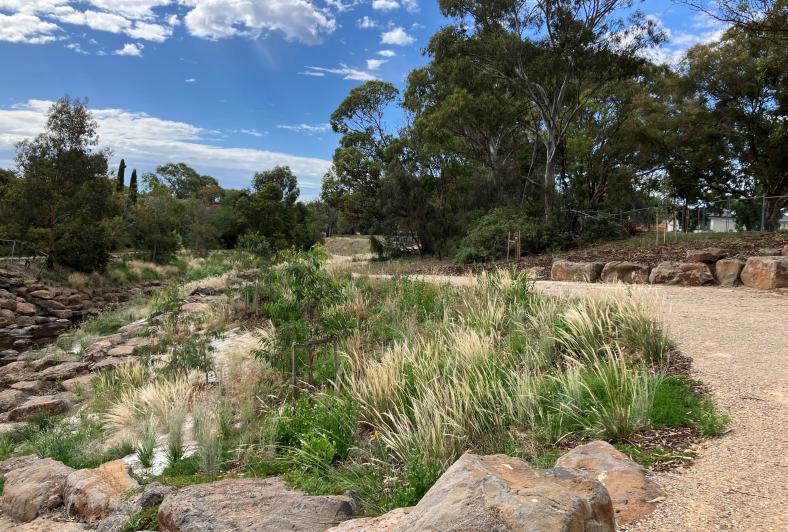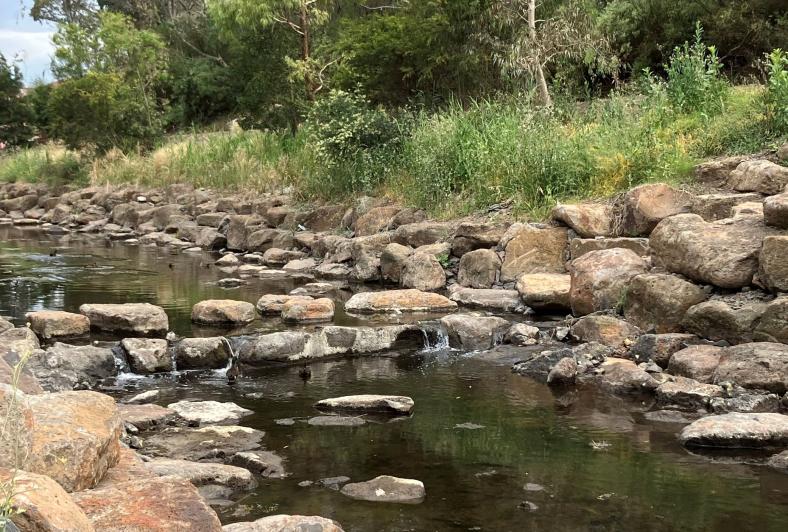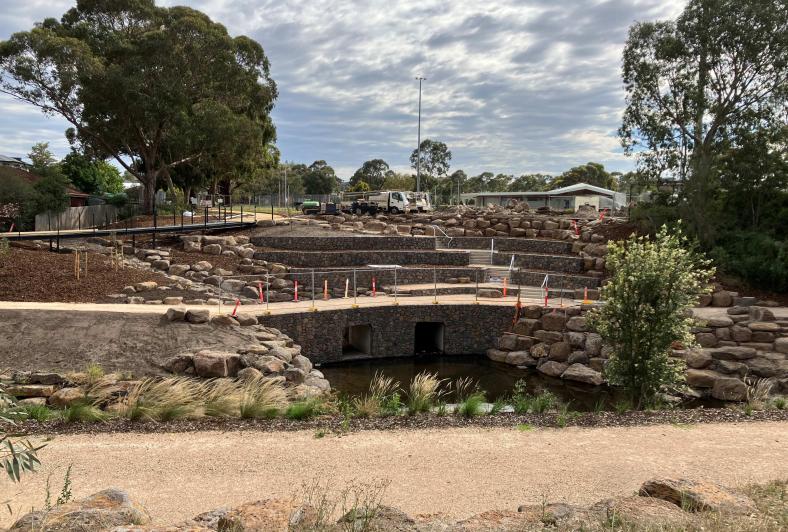FAQs
- Why was the creek lined with concrete?
-
Between the 1940s and 1980s, like many urban waterways, the Moonee Ponds Creek from Strathmore to Flemington Road was highly modified, realigned and concreted by the Melbourne and Metropolitan Board of Works (MMBW), to carry flood water away from properties in the most efficient manner possible – which was considered best practice at the time.
Waterway management and drainage approaches have evolved over time to better recognise the environmental and social value of natural waterways, and for these values to be managed in harmony with the drainage services they also provide. Current thinking now better recognises the value that restoring previously engineered stormwater channels to more natural systems (creek naturalisation) contributes to liveable communities and waterway health.
- Why was this section of Moonee Ponds Creek chosen to ‘reimagine’ over other sections?
-
The Reimagining Moonee Ponds Creek project covers a 360-metre section of the most northerly concreted section of the creek in Oak Park and Strathmore. Through community feedback that informed the Chain of Ponds Strategic Plan in 2018, this particular section of the creek was identified as a priority area as it was the last section of the creek to be concreted, and represents the most upstream section of concrete channel.
- Why was only a 360 metre section of creek naturalised?
-
The naturalisation of large concrete channels like Moonee Ponds Creek can unfortunately be very costly. This is primarily due to the significant excavation required to remove the concrete and reshape the waterway to recreate a more natural form, making strong delivery partnerships essential in the delivery of large naturalisation projects. This project was also a pilot to demonstrate how Moonee Ponds Creek could be naturalised more cost-effectively in the future, so it was important to start small.
- Why couldn’t all the concrete be completely removed?
-
Due to low levels of PFAS in the soil beneath the concrete base of the creek channel (something we discovered during preliminary investigations for the project in 2021), a decision was made to leave the concrete base in place, essentially locking the PFAS in the soil. This decision was mainly based on the high additional costs associated with the transport and disposal of contaminated soil off site at a designated waste management facility, and making the best use of the funds we had.
By installing rockwork on top of the concrete base, rather than removing the concrete, a similar ‘naturalised’ look was still achieved.
- What is PFAS?
-
PFAS (per and polyfluoroalkyl substances) are a group of human-made chemicals that have been widely used since the mid-1900s in industrial and consumer products such as oil, and grease-resistant food packaging, non-stick cookware, cosmetics, clothing, and firefighting foams.
PFAS are often known as ‘forever chemicals’ as they are highly resistant to degradation due to their stable chemical structure. PFAS are of concern because they can persist for a long time in the environment and humans. These substances are now commonly detected at trace levels in groundwater, surface water and soils in urban areas worldwide. For most people, the level of exposure to PFAS is likely to be small. The Water Services Association of Australia (WSAA) Fact Sheet provides further information: Per- and Poly-Fluoroalkyl Substances (PFAS) Fact Sheet. - What happened with the concrete that was removed?
-
The concrete was taken to a recycling facility where it was crushed and went through a process called ‘thermal desorption’, which removes the PFAS through heat. The resultant clean concrete was then able to be re-purposed and used for other projects that needed concrete.
- What about asbestos?
-
Upon testing, it was revealed that soil in the project area contained fragments of non-friable asbestos. Non-friable asbestos is lower risk compared to other types of asbestos as it is more difficult to become airborne. In line with contamination handling guidelines, a licenced contractor wearing recommended safety equipment will undertake the removal to ensure that the risk remains negligible. While not required by regulations, Melbourne Water will take a conservative approach and engage a health and safety consultant to monitor air quality in the area to ensure that it remains at safe levels to the public.
- Are there future plans to naturalise more sections of Moonee Ponds Creek?
-
The Chain of Ponds Collaboration Group sets a long term strategic plan to progressively transform Moonee Ponds Creek into an iconic waterway for Melbourne that provides high social, cultural and environmental benefits.
The Collaboration has developed a prospectus identifying a number of priorities for advocacy and delivery. Working groups have been established around these priorities, determining ways to deliver projects using a catchment-wide approach. More information on key projects that are currently underway can be found here: https://chainofponds.org/
It was envisaged that if the Reimagining Moonee Ponds Creek project was successfully delivered and showed a good return on investment with strong community support, that this would help to leverage funding for naturalising other sections of the creek in the future.
We’re excited to announce that there will be a second stage to transform a further section of the creek down to Lebanon Reserve. This is thanks to a $11.4 million investment from the State Government into Melbourne Water’s Reimagining Your Creek Program, and $5 million from the Federal Government’s Urban Rivers and Catchments Program. Early planning and investigations work for this next stage is already underway, with delivery expected to take place in 2027-28.
Reimagining Your Creek Program
Melbourne Water’s Reimagining Your Creek Program works collaboratively with councils, communities, Traditional Owners and local residents to transform stormwater drains and concrete channels into natural waterways and desirable open spaces.
The program has seen the transformation of sections of Taralla Creek in Croydon, Arnolds Creek in Melton West, and Blind Creek in Boronia, Wantirna South and Knoxfield.
Comprehensive flood modelling is always undertaken to ensure that there will be no increased flooding risk to the local community or downstream users as a result of these projects.
Community bulletins
- 2024 bulletins
-
- 2023 bulletins
-
Contact us
If you have questions or feedback on the project, please get in touch with the project team:



